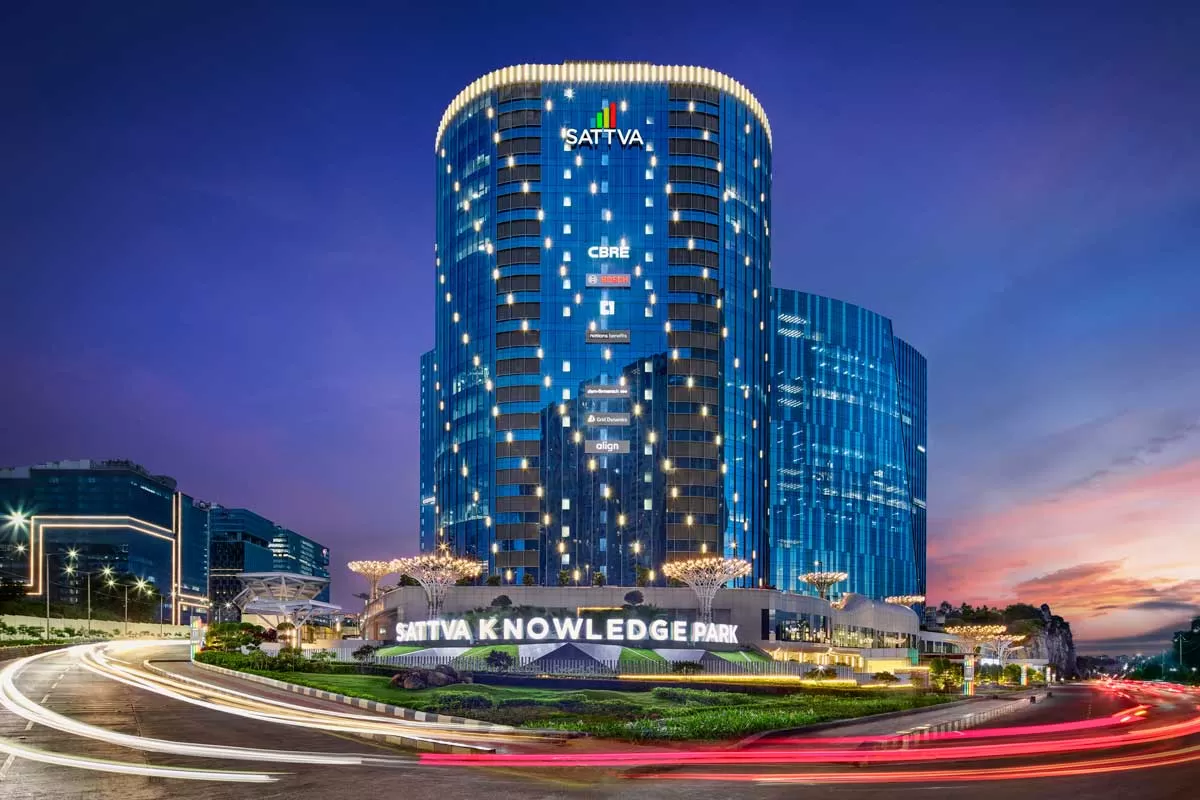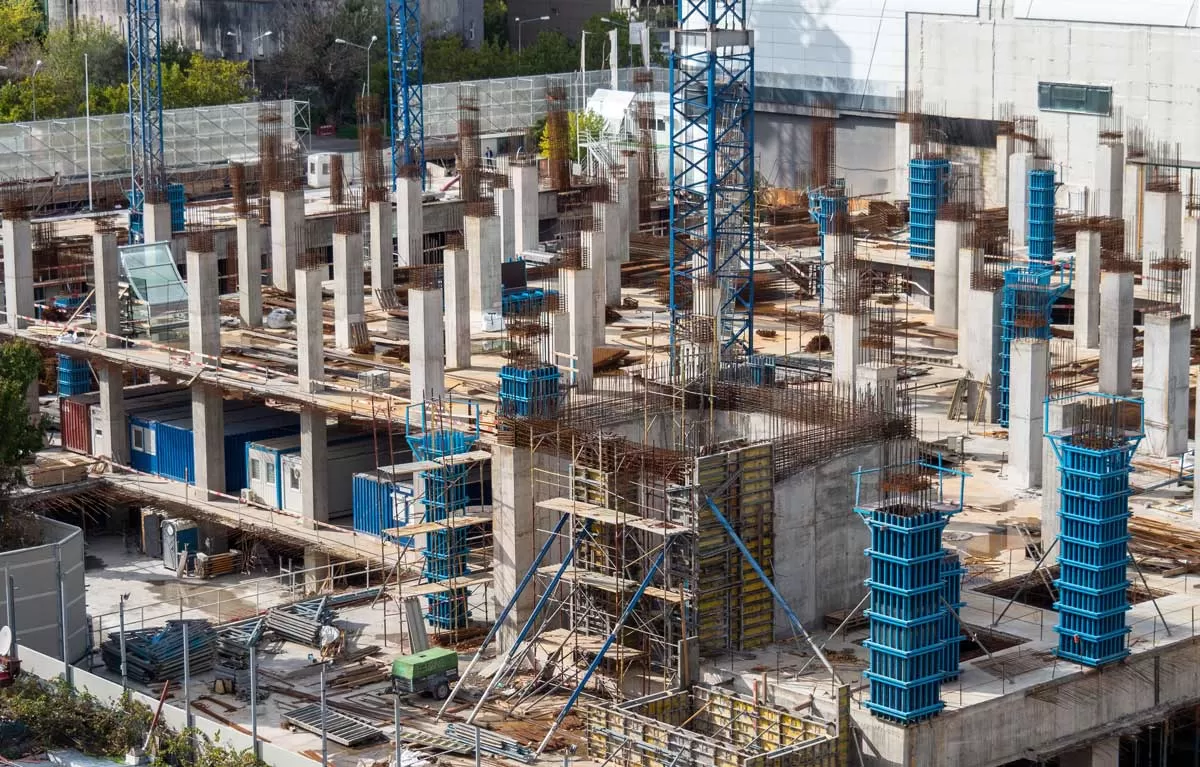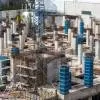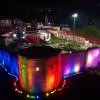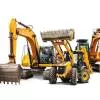Although a relatively new concept, smart homes are creating a buzz in the market, globally and in India.Smart homes use Internet-connected devices to enable remote monitoring and management of appliances and systems. In fact, home automation is increasingly being considered a necessity than a luxury, with safety, security and energy-efficiency as imperatives.Today’s smart homes feature TVs, lighting systems, thermostats, locks, security cameras, kitchen appliances and household system monitors – which are all smart! Globally, the smart home appliances market is expected to grow at about 32 per cent CAGR during 2019-2025. What’s more, the Asia Pacific region is expected to witness the fastest growth rate in this period, considering the increase in the number of home appliances vendors in this region. In India, the home automation market currently stands at $1.6 billion and is estimated to reach $7.2 billion by 2023. It is dominated by smart appliances, security systems, lighting and controls, and energy management.Trending features In India, technologies like motion-sensing cameras, smart alarms and video door monitoring systems have been highly popular. According to Ashish R Puravankara, Managing Director, Puravankara, “We have also noticed that plug-and-play, voice-controlled devices like Google Home and similar devices have gained greater acceptance among homebuyers who are now looking to convert their living spaces into voice-enabled smart homes.” Agreeing that voice assistants like Google Home and Amazon Alexa are becoming popular, Dr Narendra Bhat, President, BuildTrack, says, “This is a new interface to home automation and adds another layer of convenience to the usual smart app option. Besides, homeowners are increasingly inquiring about wireless home automation that can retrofit existing homes without disrupting the ambience or décor and making changes to existing switchboards. On the smart app front, users are looking to go beyond a list of devices and seeking more interesting 360o panoramic room views where the device controls or monitors are placed, as they are more intuitive and appealing to use.” “Certain parts of a home, like the living room, tend to have more automation,” says Ayan Sen, Founder, Ayan Sen Architects. Also, in terms of safety and security systems, he mentions that people are getting more used to monitors in their home. And Avinash K Gautam, CEO, Silvan Innovation Labs, adds, “Smart appliances and smart lights are gaining a lot of traction.”Buyer requirements on the safety and security front include sensors for smoke, gas leak, door intrusion, glass break, motion, etc, which can send them notifications on smart apps. And on the comfort and convenience side, they look for control of lights, fans, ACs, curtains or blinds, TVs and media devices via smart apps, adds Dr Bhat. The role of IoT Advancement in Internet of Things (IoT) is a key driver of the smart home appliances market. IoT basically extends the ability to control devices either over a home network wirelessly or from anywhere in the world where users have Internet access. “IoT is among the key technology drivers that give distinct value to home buyers who wish to opt for smart home solutions in terms of affordability, modularity, scalability, ease of installation, ease of maintenance and ease of usage,” affirms Gautam. Many devices are now coming with the IoT option built-in; for instance, washing machines that tell you the status of operation via smart apps, adds Dr Bhat. “Using our single BuildTrack IoT platform, we have developed many different solutions that can serve multiple market segments and geographies. In eastern India, our building management solution serves ‘The 42’, the tallest building in India, in Kolkata.”Peak efficiencyHome automation has become popular because of its innate ability to minimise wastage by providing complete control of interconnected devices to the homeowner. “With home automation providing complete control over appliances and devices to homeowners, one can benefit from these technologies, especially in terms of energy saving,” adds Puravankara. “One can keep energy consumption in check, thereby saving a lot of money.”An example is the ‘PresetScene’ feature in home automation. As a spokesperson from Kalpataru shares, it prevents the wastage of energy by operating lights, air-conditioners and air-ventilation systems on a real-time requirement. As automation can be controlled from applications on smart devices, it helps to monitor the status of devices. These devices are capable of learning, processing and adapting to your preferences and habits.Fine-tuning preferencesIndeed, while home automation offers a wide spectrum of products to cater to every need and desire, it is ideally fine-tuned for the individual user. As Sen explains, “If we have a menu of 20 home automation services on offer, instead of giving the client all of them, the automation or appliance should be decided based on their bigger preference; for instance, the music system automation with voice control, etc. It varies from people to people.” He recollects a case where the client only wanted automation in blinds, for the lights in the living room, and some basic security. “It should be that easily customisable!” he exclaims. “Also, it should be easily customisable in the sense that if I want only three out of 10 services now, I should be able to add on more later.”Puravankara has recently collaborated with Google to launch its new residential line, BluNex Life. These homes will consist of a pre-installed Google Home device with customisable features. “We have given fundamental features and the infrastructure can be upgraded to new technology according to the preference of the homebuyer,” says Puravankara.At its project Kalpataru Avana in Mumbai, Kalpataru provides voice control for electrical appliances, suitable for Alexa, Siri and Google Home. Additionally, the lighting, curtain, air-conditioner, geyser and audio-video systems in its projects are controlled by smart switches and device applications available for download. It also provides a state-of-the-art, IP-based video door phone and a key to maintain safety and security as well as inbuilt panic and SOS buttons for emergencies.Meanwhile, BuildTrack is constantly innovating and integrating newer features into its solutions to facilitate more choices and conveniences. As Dr Bhat shares, “For instance, the introduction of voice assistants by Google (Home) and Amazon (Alexa) are serving as an addition to other interfaces like smart apps, switches and remotes.” Recently, the firm has also introduced capacitive glass touch switches that can be controlled via smart Apps, voice assistants or sensors. Silvan Innovation Labs is offering new experiences with voice integration and smart applications of artificial intelligence (AI) and machine learning. “These experiences go beyond what customers get today and introduce new paradigms in use experience, accident prevention, energy conservation and preventive maintenance,” says Gautam. Affordable housing driving demandIn the past, smart homes were viewed as a luxury. This has changed substantially, because of the development of technologies like IoT and social transformation.As Dr Bhat explains, “The number of smartphones in India is anticipated to reach 440 million by 2022. These phones that serve multiple needs are also a gateway to access smart automation at no additional expense. As people in the affordable home segment already have these smartphones, they incrementally seek home automation solutions for their homes where they see a need; say, for safety, security or convenience.”The good news is that the advent of IoT has made the products quite inexpensive and within the reach of the masses. “We are working with several real-estate developers in the affordable sector to see what kind of technology can be adopted,” shares Gautam.Opportunities ahead Home automation is definitely on the rise. BuildTrack is focusing on providing more options for users to enjoy their interfaces with their home automation system. “We are doing it in three ways,” elaborates Dr Bhat. “We are introducing a range of automation-ready glass touch switches in multiple colours, sizes and layouts; adding functionality via Alexa or Google voice assistants to improve usability of home automation; and enabling visually appealing 360o panoramic images of users’ homes as backgrounds through visual smart apps on which the appropriate home automation devices and their status can be displayed.”“The infrastructure situation here demands that products be customised for the Indian market,” says Gautam. “That, by itself, opens opportunities for companies wanting to do business in this domain.” Going forward, Silvan Innovation Labs plans to expand its strong presence in southern India across the country.Indeed, with strong economic growth in the Asia-Pacific region, domestic as well as foreign manufacturers and retailers of home appliances are witnessing potential opportunities for expansion. Further, the increase in demand for energy-efficient appliances is anticipated to create new business opportunities. The market is undoubtedly turning smarter!Smart services for cost and energy savingsSENTHIL THANGAM, Senior General Manager, Commercial Air-Conditioning Division, Blue Star, shares how turnkey contractors can contribute in building a smart home.As a solutions provider, it is important to be associated with the project right at the planning stage. This will enable us to understand the customer requirement, offer various options, and facilitate the customer in deciding on the right solution. There is a need to change the standard process of inviting a quote for a specific product and instead seek the right solutions from the vendor. This can pave the way for the evolution of energy-efficient smart homes in India.The selection of the right air-conditioning system is important for residential applications. Generally, this segment operates on high diversity; hence, we need to select products such as VRF that can operate efficiently on high diversity. The next important aspect is the ability of the system to precisely regulate capacity in line with changing load patterns, which will govern overall efficiency and enable power savings.Retrofitting New to SmartTransforming old homes into smart ones can be complex. However, modern advances in technology have made it possible, says Ashish R Puravankara, Managing Director, Puravankara. “The biggest factor, though, is the ability to understand which exact technology would be the best suited for the old home. Then, it becomes easier to seamlessly integrate those devices in the old setup. Customers usually opt for smart technologies that can address their most basic concerns – for instance, home security systems, smart lighting and smart thermostats.”Several technologies can retrofit existing object (switches, sockets, IR-controlled devices like air-conditioners or TVs) to be IoT-enabled, observes Dr Narendra Bhat, President, BuildTrack. “Sensors can be added to the mix, so that IoT technology provides notifications via smart apps when they are triggered owing to smoke, gas leak, or even quality of air.”Decentralised home automation is useful in older homes as it can be incorporated without changing the wiring. “In this case, existing conventional switch plates are replaced by smart switches and an independent processor for compatibility with smart device applications and voice control,” highlights a spokesperson from Kalpataru.Ayan Sen, Founder, Ayan Sen Architects, believes the cost for an old home to be retrofitted to smart is in the range of Rs 2 lakh-2.5 lakh, although it varies from vendor to vendor and the nature of the various appliances. In terms of additional investment in building a smart home compared to a conventional one, he says, “Rs 5-10 lakh is a good amount for a basic degree of systematised automation. In terms of return on investment, obviously when you get out of a room and the light is switched off, you save that much on energy and costs.”Posing ConcernsBy and large, the average homebuyer in India is still technophobic. “So, we have to realise that technophobia is our biggest challenge and consider the maintainability of such items and technology,” says Ayan Sen, Founder, Ayan Sen Architects. Also, given that Indian homes are constructed using brick and concrete, the use of wireless systems constantly poses a challenge, adds Dr Narendra Bhat, President, BuildTrack. “We typically recommend that during construction or renovation, users set up requisite wiring so they can add on home automation aspects when they need or wish to.”Smart is Green A green home is actually a smart home by design and implementation. Ideally, a green home designed holistically would address key parameters such as energy-efficiency, water reduction, sustainable materials and resources, site selection and indoor air quality. A green home with upgradation on technologies, automation and renewable energy sources is a smart home with IoT, BMS, automation, lighting sensors and renewable energy integrated with smartphone applications, allowing flexibility to occupants to verify energy and water savings in real time. Smart homes can be evaluated under IGBC Green Homes ratings system Ver 3.0, the latest edition launched in September this year.S Raghupathy, Chair, Asia Pacific Network (APN) and Deputy Director General, CII, highlights the most trending green features a smart home can incorporate:Daylighting: The best strategy to be energy-efficient in daytime is to have access to natural light in living spaces. This again depends on how the building is oriented and openings designed. This would allow energy savings of close to 60 per cent in lighting alone, when it is integrated with lighting sensors. These sensors form an important component of security, home control, energy-efficiency, automated lighting control, and other helpful systems.In spaces where daylighting from windows cannot penetrate, projects can make use of the ‘light pipe’ innovation. Appliances: The use of LED lighting and star-rated appliances can help reduce energy consumption to a greater extent, as can the use of smart devices that regulate appliances and lights to minimise the amount of electricity they consume. Temperature control: Computerised thermostats can minimise the carbon footprint; for instance, by allowing the regulation of temperature through a mobile device. Going net-zero: These are projects that achieve 20-30 per cent energy savings by design over the energy benchmarks of Energy Conservation Building Code-R and meet the balance 70-80 per cent through on-site renewable energy systems to achieve self-sufficiency in energy without depending on the main grid. Simply put, the annual energy consumption of the project should completely be met through on-site renewable energy systems.Metering and monitoring: Sub-metering of outdoor lighting, water pumping, EV charger, etc, can help analyse the electricity use pattern and further improve energy-efficiency. Building automation can help monitor the complete consumption pattern on one screen and make it easier for data accessibility and analysis. Smart water metering for every dwelling unit is the new trend in residential buildings.
